-
Posts
420 -
Joined
-
Last visited
Content Type
Profiles
Forums
Resource Library
Events
Gallery
Blogs
Store
Community Map
Posts posted by hexagon789
-
-
1 hour ago, LNERW1 said:
Thought I’d actually contribute- I’ve heard 071s and 66s referred to as Yank Tanks. I feel it’s obvious enough why.
I believe the 121s are commonly known as 'Yanks' because they were the first US-built locos.
Similarly the 59s in the UK are known as 'Yanks', though a few other classes with US heritage are also nicknamed such, including at least one class of steam locomotive.
-
 1
1
-
-
37 minutes ago, gibbo675 said:
Hi Hexagon,
I could add some extras names to that list:
- 08 Gronk
- 20 Chopper
- 24/25 Rats because they scurry about all over the place
- 26/27 McRats because they mostly worked in Scotland
- 37 Tractors
- 40 Whistler
- 44/45/46 Peaks although only the 44's carried such name plates
- 47 Spoons because of the the noise the horns made
- 50 Hoovers variation of Vac
- 55 Deltic
- 60 Tugs
- 81-85 Roarer
- 90 Skoda
Gibbo.
Thank you Gibbo, much appreciated, but Irishmail posted those further up, I was just giving some further variants for those same classes.
-
 1
1
-
4 hours ago, Niles said:
MkIVs are only certified for 071 haulage in an emergency/rescue situation, a 'planned' working such as a railtour isn't permissable unfortunately.
(And yes, it has been looked into in the past!)
I'm not sure what D.D. situation is officially but there's so few of them that asking to have a set operate tour with one would be moot. As with mkIVs though they can be rescued by 071s.
Oh I appreciate that, but in emergency or in theory a tour seemed about the only options for it as in ordinary service seemed so unlikely as to be essentially a given hard 'no', so I ruled that out from the beginning.
-
 1
1
-
-
18 hours ago, DJ Dangerous said:
And what an odd nickname. Also heard them called teaspoons or teacups or something.
Teacups, because the engine sound on tickover sounds like *ti-cup ti-cup, ti-cup, ti-cup*
9 hours ago, LNERW1 said:I have a few questions, can someone help me out?
Class 52- Wizzo?
Class 31- Ped, what is this in reference to or do I want to know.
Class 55- Boats? They are Deltics. This is one where I’m not confused, I’m angry.
HST- Tram? I’m sure there’s some almost-sensible reason but really?
Class 40-Bucket? Only ever heard the term “Whistler”.
Class 60- Politicians and Donuts? I’m beginning to feel like you might be having me on.
Class 66- Ying-Yings? What on God’s Green Earth is this a reference to?
please help me
Whizzos or wizzos - because they were "wizzo or wizard", now somewhat dated slang for being great. Westerns is definitely the more common nickname though, but there are others such as Thousands.
Ped, "ped-estrian" - relating to the 31s rather sluggish performance
Boats - as mentioned, the Napier engine was widely used by the Navy in Gunboats and similar. They were also called 'gunboats' for this reason.
Tram - because they could run in either direction and were high in frequency of appearance.
Bucket was rather derogatory, Whistlers was you might say the name of choice 40 bashers/fans and bucket that of their detractors. Given because towards the end most of the 40s were 'Rust Buckets' to some degree, only the "Green one" was looked after much.
Politicians - because they are full of holes, you can see through the bodyside grilles. Ditto Doughnuts.
Ying-yings - because the low engine idle produces a charateristic 'ying-ying' sound.
8 hours ago, Niles said:66 - ying ying... sound they make idling (similar to an 071 or 201).
Not a clue otherwise

Precisely that.
I'll add some others:
• Class 08 - Jockos
• Class 14 - D Nine-Fivers
• Class 20 - Whistling Wardrobes
• Class 22 - Spokies
• Class 24 - Fruit Machines
• Class 25 - Spluts
• Class 26/27 - Spinning Tea Cups/Tip Tops
• Class 28 - Crossleys
• Class 31 - Baby Brushes/Brians/Mirlees/Rogers/Toffee Apples
• Class 33 - Bean Cans
• Class 35 - Meks
• Class 37 - Bonnets/Bullnoses/Frogeyes/Growlers/Nose Peds
• Class 40 - Big Ds/Empresses
• Class 42 - D800s
• Class 43 HSTs - Flying Bananas/Zings
• Class 44/45/46 - Wagons
• Class 45 - Cromptons
• Class 46 - Brush Fours, usual ER crew name when new; also later referred to 47s network-wide
• Class 47 - Brush Fours/Generators (401-420 only)/Hawker/MacDuff (Scottish based)/Shove Duff (push-pull fitted)
• Class 50 - Blue Bleeps/Vacs
• Class 52 - Thousands
• Class 55 - Drones/Gun Boats
• Class 56 - Christmas Trees/Gridirons
• Class 57 - Heinzs/Thumderbirds
• Class 58 - Fitted Wardrobes
• Class 59 - Yanks
• Class 60 - Polos/Ghosts
• Class 66 - Donkeys
• Class 67 - Neds/Piledrivers/Super Sheds
• Class 68 - Big Cats/Cats/Caterpillars/Warskips
• Class 70 - Fuglies/Predators/Pugs/Ugly Bettys
• Class 73 - Eddies/Mr Eds/Shoeboxes
• Class 81-86 - Sparkies
• Class 86 - Cans/Zebedees
• Class 87 - Lasers/Pifcos/Magnificent Sevens/Sevens
• Class 88 - Fat Ladies
• Class 89 - Flying Badger
• Class 90 - Carpet Slippers
• Class 91 - Ladas/Milkfloats/Super Skodas
• Class 92 - Caravans
Some for units:
Arkwrights - 444s
Basils - 755s
Bog Carts - 1st gen DMUs
Clactons - 309s
Cucumbers - GWR 800/802
Dessies/Dezzies - 350/380/444/450
Four Slip 'n' Slide - 455s
Greyhounds - 421/5
Happy Trains - 365s
Javelins - 395
Nelsons - SR 4COR
Nodding Donkeys - Pacers
Plastic Pigs - 442s
Rattle Traps - 304
Scuds/Shoeboxes/Skateboards - 153
Thumpers - 205 mainly but any of 201-207
Zoomers - LNER 800/801-
 1
1
-
 1
1
-
-
4 minutes ago, GSR 800 said:
Doors are operated from drivers cab on DDs iirc.
Would it be that hard to rig them with it? Getting tight enough with increasing services.
Depends how invasive or straight forward such mods might be. I presume there is still provision to work doors from the van or from a door vestibule?
Wouldn't having a guard work the doors on any prospective 071 working be simpler?
-
On 21/8/2024 at 10:19 PM, LNERW1 said:
Just wondering whether 071s would theoretically work instead of a 201 to power MKIV or De Dietrich trainsets? I know they don’t have HEP, but is there any other equipment missing?
The Mk4s have HEP provided by two gensets in the DVT and the De-Dietrichs now use refurbished Mk3 EGVs rather than power from the 201s, so loco-provided HEP doesn't really matter.
On the question of actually hauling either type, there would be no problem as 071s are dual braked, so can haul air-braked Mk3/Mk4/D-D stock no problem.
The 90mph top speed of the 071s would only pose a slight problem on the Cork Line where there is now plenty of 100mph track including one almost 50-mile long section passed continuously for that speed now; the Cross-Border Dublin/Belfast Main Line having a 90mph ceiling.
The main safety issue might be lack of door control buttons on the 071s, as I believe when they hauled Mk3s the doors were always operated by the guard from the van or in later years from selected door vestibule control panels when modified. Not sure on the De-Dietrichs, but on the Mk4s the driver does the doors from the cab AFAIK.
I don't see that an emergency or even railtour would have any real insurmountable issues with D-D or Mk4s being hauled by an 071 though, there's no physical incompatibility in the most basic features - getting the damn' thing to go and stop!
-
 1
1
-
-
2 hours ago, DJ Dangerous said:
And a few posts on UK loco nicknames here:
If GB nicknames were included, I have a list of over 600 and still growing...
-
 1
1
-
-
19 minutes ago, Gabhal Luimnigh said:
I can never really understand something like that, I mean if in doubt etc etc!
If you were familiar with the layout at Cook Street, you could understand how easily it could happen in spite of all the warning signs and 'low bridge' warning system in place on the buses themselves.
-
Dutch Vans (steam heat) - boilers: Two Spanner of 1000lb/hrs. Generator - Lister HR3 of 32.25hp at 1500rpm
Dutch Van (electric heat) - one Cummins NTA 885-G3 of 535hp at 1800rpm powering one Dale EM/395/DCE Alternator of 283.5kW at 1500rpm
BR Van - boiler: One Spanner of 2000 lb/hr. Generator: Lister HR3 of 32.25hp at 1500rpm
Mk2D EGV - Engines: Two Detroit 8V-71N of 234hp at 1575rpm powering Two International Electric alternators of 160kW
Mk3 EGV -
As built - Engines: Two Detroit 8V-71N of 234hp at 1575rpm powering Two Newton Derby Alternators of 168kW
As modified Engines: - Two Cummins LTA 10G3 of 295hp powering Two Newton Stamford HD4D Alternators of 202kW at 1500rpm.
Details from 2004.
For reference - a Mk3 coach requires 30kW of power, a Mk3 diner requires 70kW.
Hopefully this helps in some way.
-
 2
2
-
 1
1
-
 1
1
-
 4
4
-
-
14 minutes ago, amdaley said:
Surely there are safeguards in place to prevent such head on collision ?
While the new build and upgraded sections are equipped for ETCS cab signalling, much of the old parts of the line still in use have the signalling either broken or disabled and thus are worked on telephone and train orders.
57 minutes ago, Ironroad said:Since this was a head on crash on a double track line one of these trains was on the wrong line. I believe trains in Greece travel on the right and from the pictures it looks like the passenger train was on the left. How that happened is the question, it is an incredible error in this day and age. I also wonder what the protocol is when a driver realises they are on the wrong track as surely must have been the case.
Almost all double track in Greece is equipped for Bi-directional running.
-
 1
1
-
 2
2
-
-
-
13 minutes ago, jhb171achill said:
Top ones are Inverness. Class 24 diesel.
The fact that it's in the 'south' side platforms and has a Class 1 'Express' headcode in the headcode box, suggests a Glasgow or Edinburgh service.
Aberdeen trains were Class 120s DMU from 1959-80, so I'm ruling that out.
The mix of Blue/Grey & Maroon Mk1s suggests late-60s/very early 1970s.
Bottom two are Stranraer Harbour with a Class 126 DMU, these were repainted from Green first to all-blue then to Blue/Grey as here.
The 126s only received Blue/Grey from 1977 and the Class was mostly withdrawn in 1982, a couple of sets surviving until January 1983.
The Stranraer services became loco-hauled in 1981/2.
So bottom photos are 1977-81; likely more in the middle of that range.
5 minutes ago, jhb171achill said:Class 52 'Western' (2,700bhp 90mph Diesel-hydraulic), no idea of location or year though but they were all based on the Western Region!

-
 1
1
-
 1
1
-
-
1 hour ago, Broithe said:
After a while, all these exotic beach holiday destinations just blur into one...
The clock in Skeg is a good way from the station, and offline from it, too.
Apologies, I thought the clock was at the station at Skegness.
And in my defence I've never seen Cleethorpes!
13 hours ago, Broithe said:I think the station might be Cleethorpes.
Yes, my error there
-
 2
2
-
-
12 minutes ago, jhb171achill said:
SUPERB info, Hexagon; this is exactly why I'm posting this stuff here!
You're very welcome. What I lack in historical knowledge of Irish railways, I hope I make up for in more modern age GB railways!
(I think my modern era Irish railway knowledge isn't bad though!
 )
)
-
 1
1
-
-
On 20/10/2022 at 8:10 PM, jhb171achill said:
The loco is a Class 31. A1A-A1Am Originally Mirlees engines of 1,200 or 1,365hp; these were unreliable so they were re-engined '65-'69 with English Electric of 1,470hp, essentially downrated versions of the engines installed in Class 37s. Top speed was 80 or 90mph depending on subclass. Nicknamed Toffee Apples or Goyles.
Very common in Anglia, Lincolnshire and out that way.
The DMUs are Class 108, same drivetrain as the 108s, but built by Derby rather than Met-Camm
The station is Skegness, the clock is the giveaway.
1 hour ago, jhb171achill said:Tonight's visit to Brexitstan
Class 24. 1,160hp, 75mph - basically the British equivalent of a 181 Class!
 1 hour ago, jhb171achill said:
1 hour ago, jhb171achill said:A visit there in 1969 or 70 for me was the first time I had been out of Ireland, and what I now believe were 101 class railcars were on many local trains, some in green, some blue & grey.
Very likely, the 101s were pretty ubiquitous in many parts of the BR network. The last five units survived until 23rd December 2003 - about 47 years.
1 hour ago, jhb171achill said:Main line trains often had 47s, and possibly "Peaks"? About half of them green, the rest blue & yellow
47s, given there were 512 built, were common everywhere, probably even more so than the 101s. A handful still run on the mainline, mostly on charters and railtours but some do stock transfer workings and similar.
'Peaks' actually refers to three classes 44, 45, 46 - the name is because the earliest batches of 44s were named after mountains, such as Scafell Peak etc.
There were only ten 44s, and while initially appearing on the West Coast, they were soon allocated to Toton and used mostly on freight as they were less powerful than the 45s and 46s at 2,300hp vs 2,500hp.
The 45s are synonymous with the Midland Main Line between London St Pancras and Leicester, Sheffield, Nottingham. In earlier years they also operated the through services to Glasgow via Leeds and the Settle-Carlisle, these ended in 1974. From the early 80s, they began appearing on Transpennine services between Liverpool and Newcastle.
The 46s were seen mostly on the North-East (Newcastle/Leeds/Sheffield) to South-West (Devon & Cornwall) Cross-Country services, and in earlier years some North-East to London services.
The main difference between 45s and 46s is the electrical equipment manufacturer.
1 hour ago, jhb171achill said:Carriage stock was all Mk 1s as far as I recall - can't swaer to there being no Mk 2s, but I don't recall seeing any
The first Mk2s appeared in 1964, but until air-braked ones appeared from 1967, they were mostly used in the best trains but mixed indiscriminately with Mk1s.
The air-braked variants were made into dedicated sets, where only the catering and full brake guard's vans were Mk1s (suitably converted to air-braking).
On secondary lines (not mainlines but proper cross-country or rural lines), Mk1s were the norm until the early/mid-80s.
1 hour ago, jhb171achill said:The Vale of Rheidol was the long-running joke, that BR didn't finish with steam in 1968!
A tourist line though, not a normal line run as a fully integrated part of British Rail. The GWR had operated it before them, and the Cambrian before them.
It was split from BR and privatised in 1989.
10 minutes ago, jhb171achill said:Princes Street Gardens, just west of Edinburgh Waverley, looking east towards Waverley.
The loco is a Class 27, synonymous with Scottish railways in the 1960s and 1970s, there will be another 27 on the back.
This is one of the Edinburgh-Glasgow High-Speed shuttles, which ran the fast services from 1972-79.
Two 27s, one each end of six Mk2Z coaches which were refitted with air disc brakes, worked push-pull.
Top speed was 90mph and they operated a half-hourly service taking 43-45 mins for the 47.25 miles with one or two stops.
They replaced sets of six-car DMUs built in 1956, which had a top speed of only 70mph.
The accelerated service was introduced as a direct result of road competition, the M8 motorway had not long opened between the Edinburgh and Glasgow and coach operators had obtained a 70mph licence to run an express coach service.
The 27s in turn were exhausted by the intensive high-speed running, reliability nose-dived and the schedules were eased by 2 mins in 1977 and a further 2 in 1978.
They were replaced in 1979-80 by sets of push-pull modified Class 47s, coded 47/7 running sets of five Mk3 coaches with a converted Mk2F brakes as driving trailers.
-
 3
3
-
 1
1
-
 1
1
-
-
34 minutes ago, jhb171achill said:
I think that between the two carriages, this thing had at least two, and possibly three wheels......and a stop and go button in the driver's cab.
Class 143 Pacer, they have the same controls as the 15x series Sprinters:
7-notch power controller
Westcode 3-step EP brake
Often derided as "nodding donkeys" due to the motion caused by the fixed four-wheel chassis when travelling at speed. Last of these was withdrawn in May 2021.
Each vehicle has 2 axles/4 wheels, the design was based on British Rails High-Speed Freight Vehicle and was tested to 140mph!
The livery is the original BR Provincial, later Regional Railways, livery.
36 minutes ago, jhb171achill said:Now an orange and black one. Must be at Leixlip (Druggie).
Strathclyde Public Transport Executive Strathclyde Red and Black.
Class 314 25kV ac EMU, 880hp/75mph. They entered service in 1979, last unit withdrawn December 2019.
Looks like Newton (Lanarkshire) station in the photo.
-
 1
1
-
-
8 minutes ago, airfixfan said:
Details are in Rail he paid 32£ instead of a fare of over 300£
He wanted an Amytime Open Return, the most expensive option. Outward portion is valid for 5 days at any time of day, the return is valid for up to one month with unlimited break of journey opportunities.
If he'd even been prepared to limit to off-peak, it would've been £124 for a return.
Also the £33 covers him getting to Barrow, there is no mention of cost nor journey details coming back...
-
11 minutes ago, airfixfan said:
Reading in latest Rail Magazine about a man who wanted to travel from London to Barrow. Found it cheaper to fly London to Dublin then Dublin to Manchester and save about 300 £ as well!
Given a walk-up is £87, I wonder how that works?
-
20 minutes ago, Ironroad said:
It's not just the interconnectivity of rail services that is ignored. Busaras in Dublin is over sixty years in existence and is sited across the street from Connolly Station, yet in all that time the concept of providing a simple elevated pedestrian walkway linking both terminals does not seem to have occurred to anyone.
Not just in Ireland; asides from similar examples here in Scotland, I can think of a few similar instances in France, in Spain and even in the usually decently integrated Netherlands, where I found buses and trains seemed to treat each other as a disease to be avoided and hidden from each other at all costs!
Local planning is something so many places just don't seem to consider properly, if indeed at all.
Pity.
-
Just now, Broithe said:
On the Big Island, there are huge anomalies in the prices of tickets and it's often cheaper to book a single journey as a number of stages. A friend of mine has turned this into an art-form.
This is his greatest triumph - Stafford to Portsmouth return, with 36 pieces of cardboard to achieve the lowest total fare.
Only one change of train, and the same booked seat on each of the two trains.
'They' do spend a bit of time trying to undo the way round the higher prices - it used to be cheaper to buy a ticket to the next station past Gatwick Airport stop, and just get off there instead, one stop early. So many people did this that they made it an offence to do so...
It is offence to stop short on advance tickets, nothing against it on walk-up tickets as break-of-journey is allowed with those.
Going further though... that's another matter.
Most split-ticket anomalies have been removed in Scotland a few years ago, but in England & Wales there are quite a few still about.
There are a couple of good websites that will figure out the splits for you.
-
 1
1
-
-
12 minutes ago, Broithe said:
It would have been about the same price, I think...
Probably
-
 1
1
-
-
1 hour ago, Broithe said:
His ticket was just Stafford to Milton Keynes, no boat involved.
Apologies, I thought you meant he was doing Ballybrophy to MK!
-
 1
1
-
-
Just now, Broithe said:
I was once booking my ticket and a chap at the next window was booking a ticket to Milton Keynes and he was charged more, despite Holyhead alone being further than MK was from Stafford.
Each station in GB is charged on the basis of which zone in fits in rather than precise distance or route for the purpose of SailRail.
Stafford is in Zone B, while Milton Keynes (as is London) is in Zone E.
The higher the letter, the higher the fare.
Zone B is £42/£47.50 to/from Dublin, £66.40/£71.60 to/from anywhere else in Ireland.
Zone E is £46.10/£51.90 and £70.50/£76.80 respectively.
The lower figure is Advance booked, the higher figure is the walk-up fare.
The highest possible fare is £80.90, a walk-up Great Britain Zone E to 'Not Dublin' via Irish Ferries Swift SeaCat (which charges a slight premium over the Ulysses sailings).
And now I've spent more than enough time in the quagmire of the GB Fares Database, so I bid you all a good night!

-
 1
1
-
-
16 minutes ago, jhb171achill said:
That's actually pretty reasonable!
Surprisingly!
-
 1
1
-
.png.c363cdf5c3fb7955cd92a55eb6dbbae0.png)

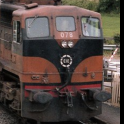
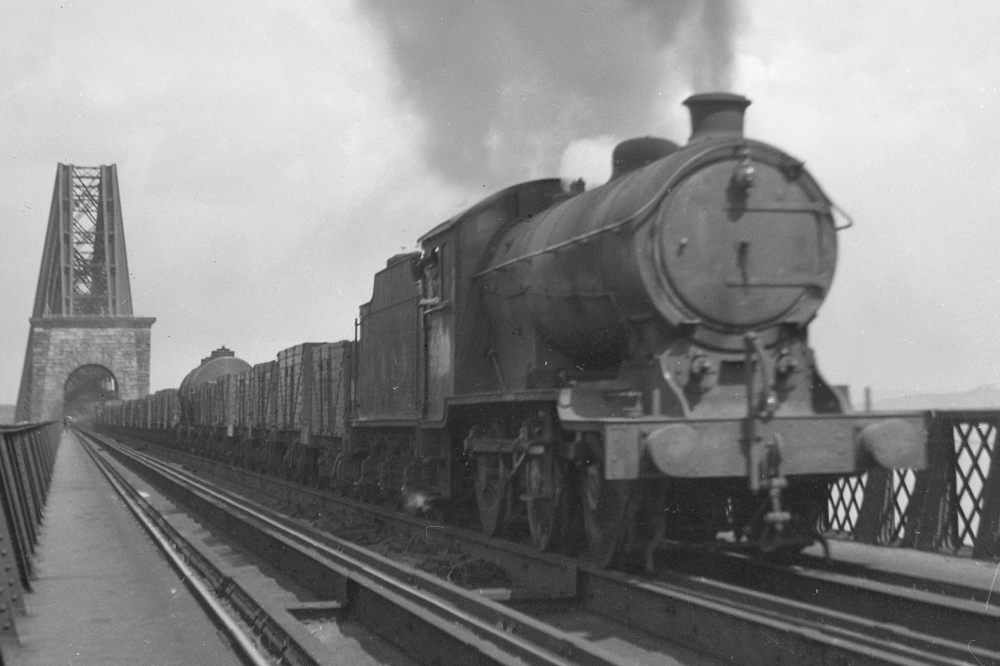
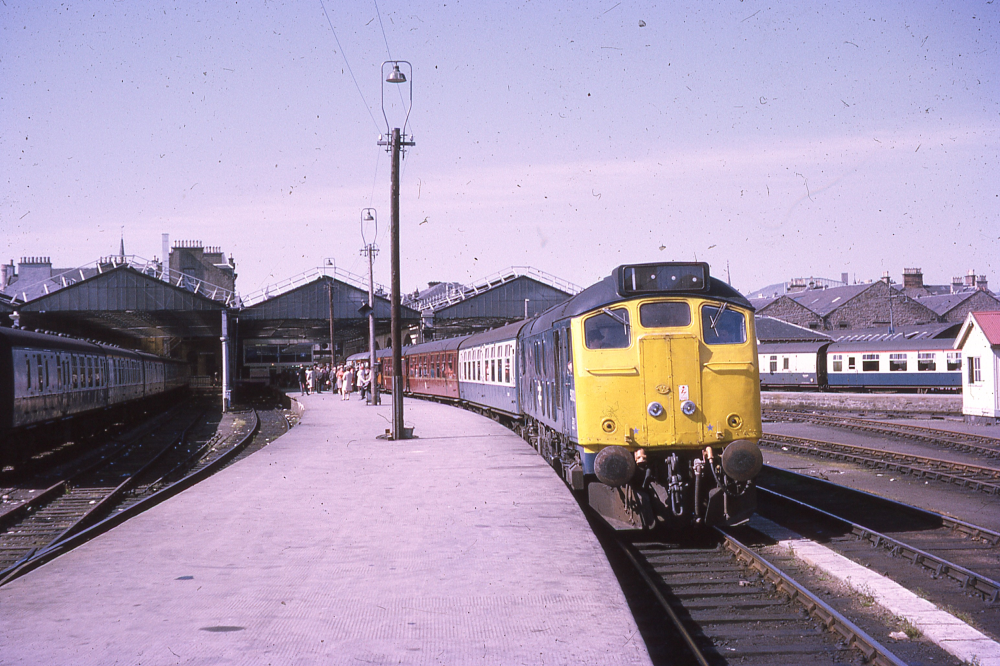
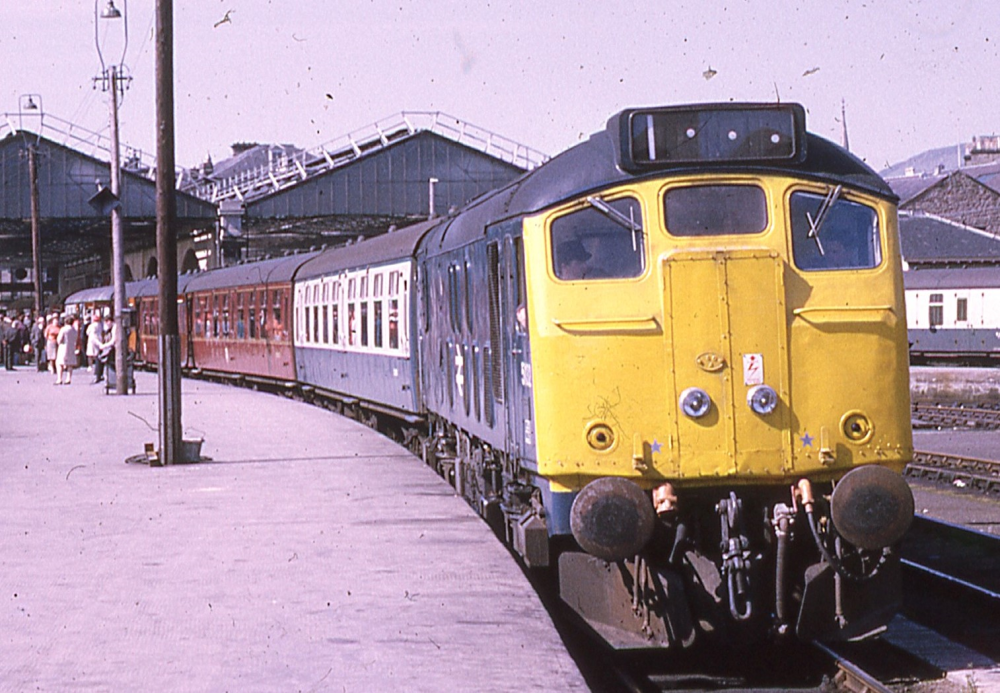
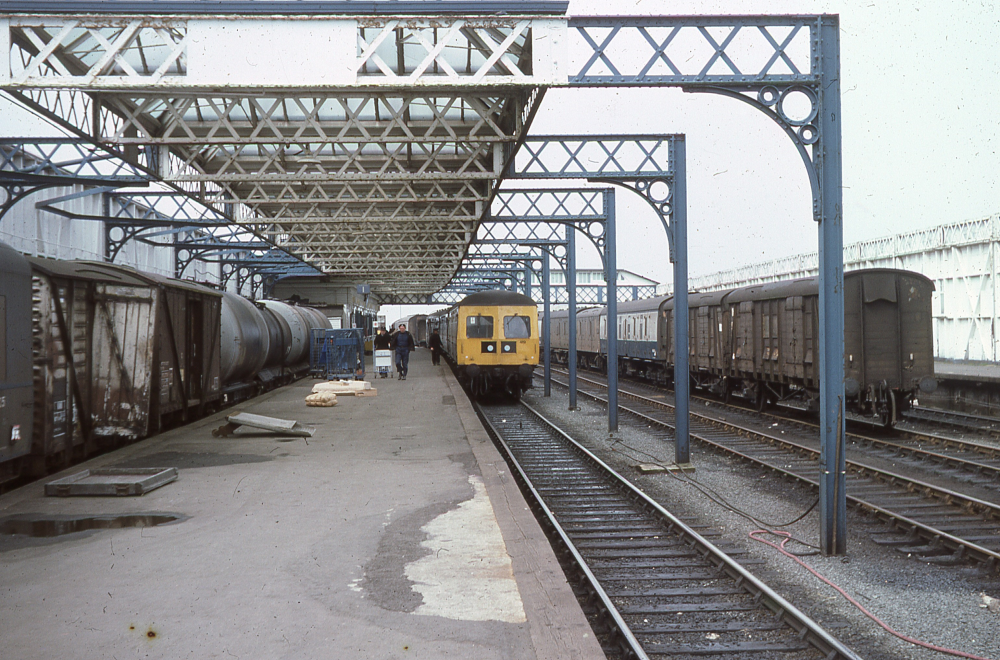

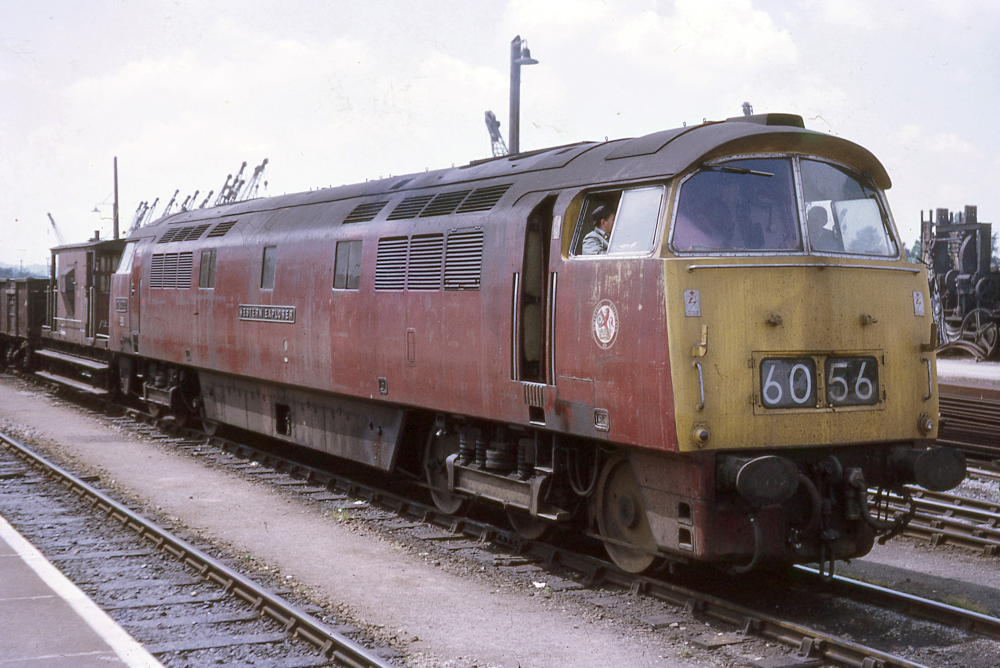
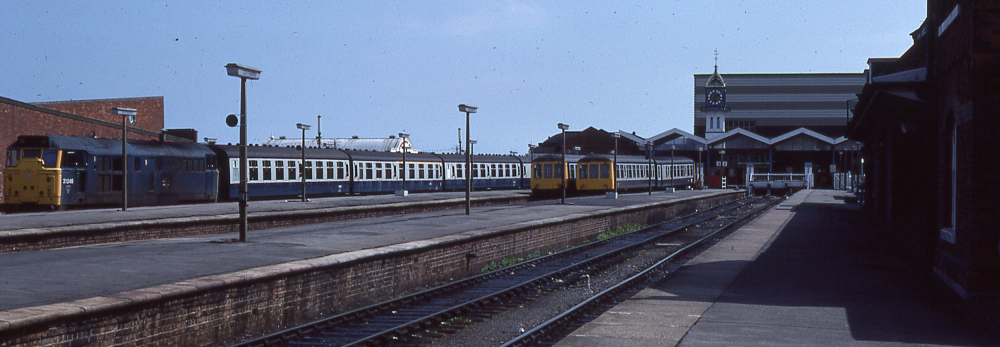
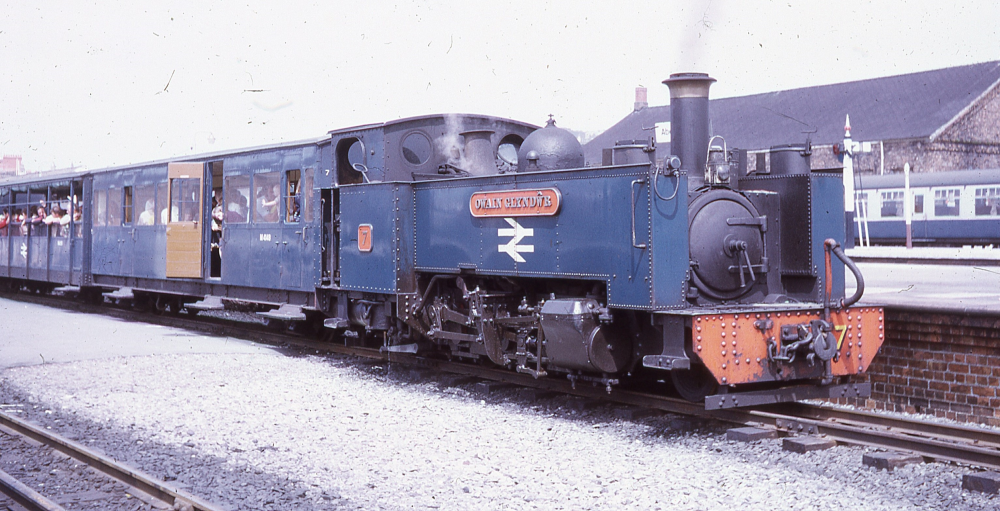
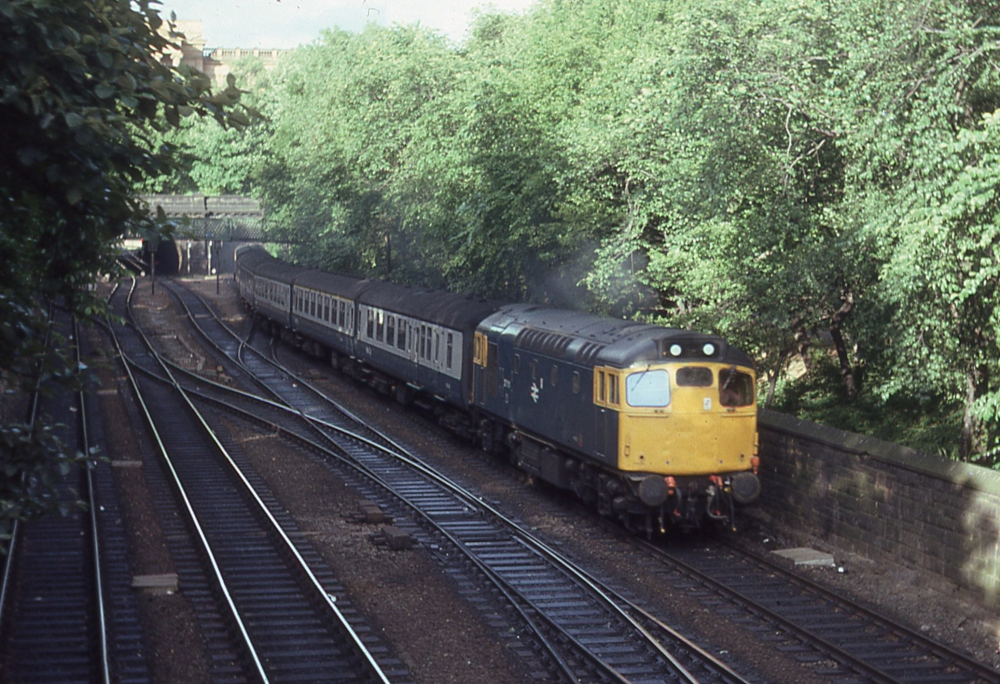

IE 22000 Class traction motors
in Questions & Answers
Posted
To put not to gine a point on it - they don't have traction motors, the 22000 Class have hydraulic transmission with one torque converter and two fluid couplings providing three transmission ratios. Change-ups being at approximately 55 and 75mph, change downs approximately 5mph lower. There is also an integrated hydrodynamic retarder, which greatly reduces friction brake wear.
The transmission is the same as on British Class 185 and 180 trains, though the latter have longer transmission ratios as they are 125mph trains, as opposed to the 100mph of the IÉ 22k Class and BR Class 185.
Each car on a 22k has one MTU engine of 360kW (483bhp), this drives both wheelsets of one via reduction gearing linked to the fitted hydraulic transmission by cardan shafts. On driving cars the powered bogie is the inner end one.
All diesel railcars in service with IÉ have hydraulic transmission, so the only traction motors are on the DART electric fleet and the 071/201 diesel loco classes.
For completeness - in NI, the C3K have hydraulic transmission while the newer C4K have mechanical transmission.
The older 80 and 450 Class were diesel-electric, so had electric traction motors - on the 80 Class two of 265bhp; on the 450 Class two of 220bhp. Both types used English Electric motors and both types had them on the inner bogie of the power cars for weight distribution reasons.
If you've any further questions I'll try to answer them